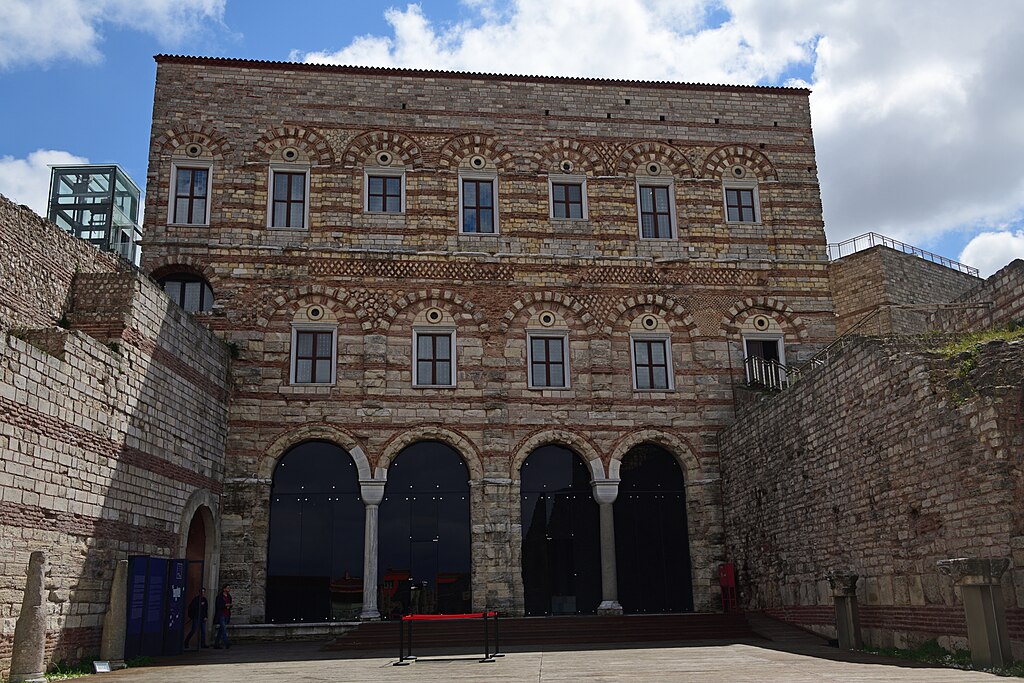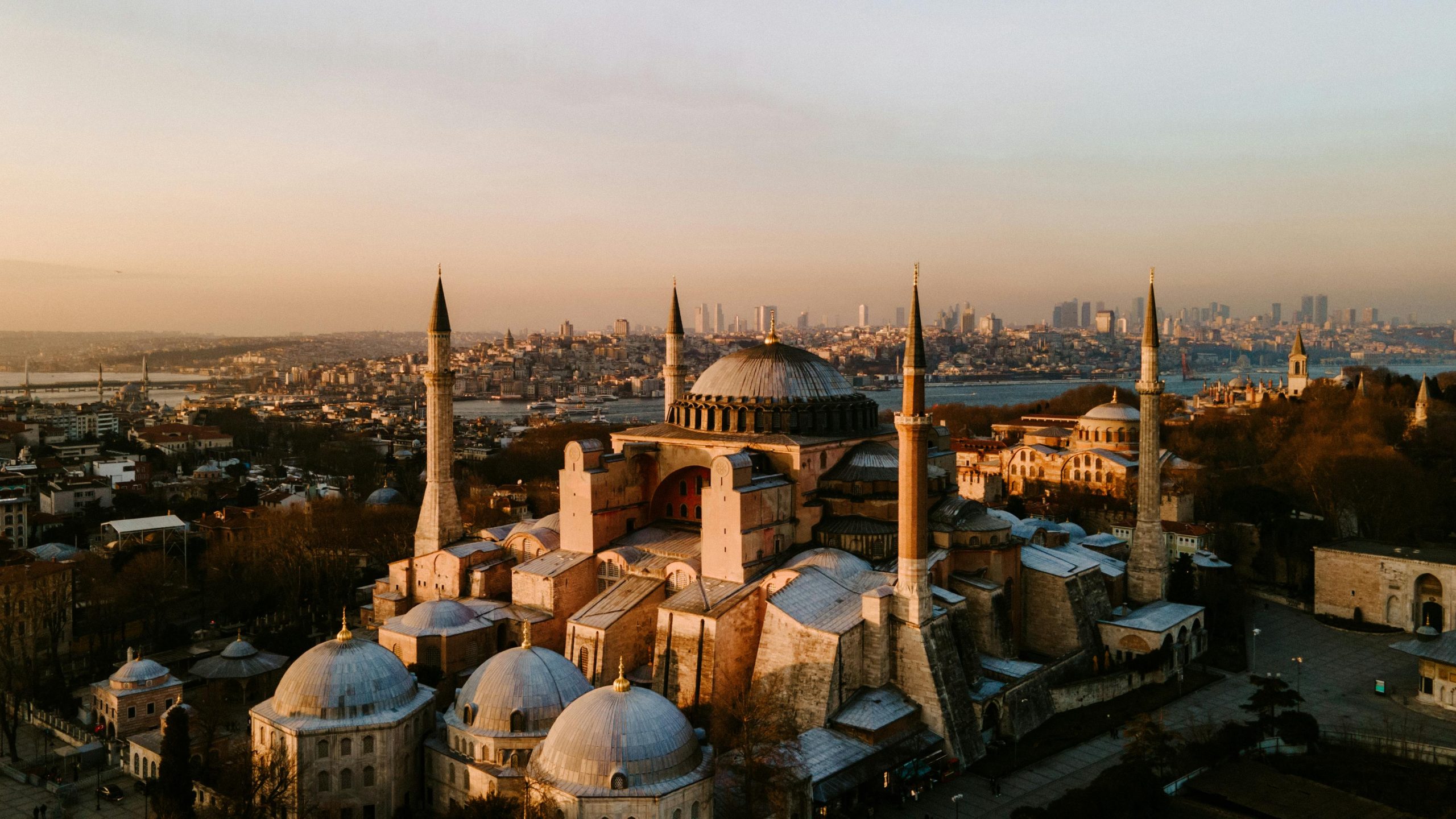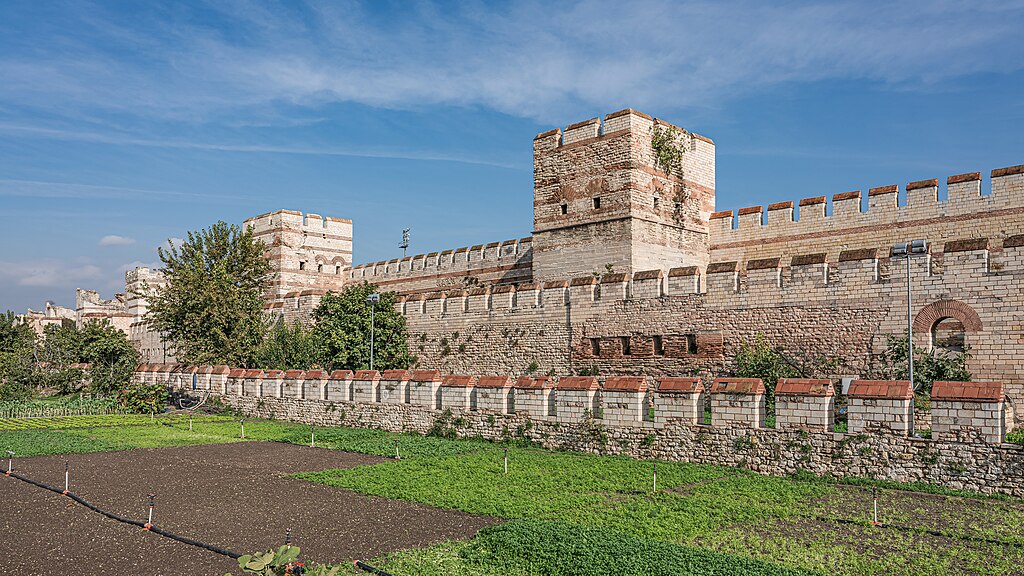Palace of the Porphyrogenitus, Istanbul
Palace in Istanbul

In a city overflowing with monuments to empires and faith, the Palace of the Porphyrogenitus feels like a quiet whisper from Byzantium's twilight years. Tucked into the northwestern corner of the old city, where the Theodosian Walls curve toward the Golden Horn, this three-storey brick-and-stone palace once formed part of the great Blachernae complex. Today it stands as one of the must-see places in Istanbul for those who love to uncover the layers of its long and complex past.
Walking through the backstreets of the Ayvansaray district, you emerge suddenly before the palace façade, a rhythmic pattern of red brick and pale stone gleaming in the sun. Few visitors venture this far from the Sultanahmet core, which makes it a great place to visit on a walking tour of Istanbul's ancient walls if you want to experience the city's history without the crowds. Standing beneath the arches, you can almost hear echoes of imperial footsteps that once passed through its upper halls.
Table of Contents
- History and Significance of the Palace of the Porphyrogenitus
- Things to See and Do in the Palace of the Porphyrogenitus
- How to Get There
- Practical Tips on Visiting the Palace of the Porphyrogenitus
- Is the Palace of the Porphyrogenitus Worth Visiting?
- FAQs for Visiting
- Nearby Attractions to the Palace of the Porphyrogenitus
History and Significance of the Palace of the Porphyrogenitus
The Palace of the Porphyrogenitus was built in the late 13th or early 14th century, during the reign of the Palaiologos dynasty, as part of the sprawling Blachernae Palace complex. The name “Porphyrogenitus,” meaning “born in the purple,” was a title given to princes born to reigning emperors, and this smaller palace likely housed one such imperial figure. Its placement beside the mighty city walls symbolised how power and defense intertwined in the final years of the Byzantine Empire.
For nearly two centuries, this palace was a residence for princes and courtiers, witnessing the intrigues and crises of a fading empire. Its upper galleries may once have hosted receptions or quiet family gatherings, while the lower floors served administrative or domestic purposes. When Constantinople fell to the Ottomans in 1453, the building survived the conquest remarkably intact. It was later used as a glass workshop, a menagerie, and even a ceramics factory — all of which helped preserve its solid shell through centuries of change.
Today, it stands as the best-preserved Byzantine palace in Istanbul and one of the top sights in the city for anyone fascinated by its imperial heritage. The palace's layered history — from the grandeur of Byzantium to its reuse in Ottoman times — tells a story of adaptation and endurance that mirrors Istanbul itself.
Things to See and Do in the Palace of the Porphyrogenitus
The first thing to admire is the palace's stunning façade. Its alternating rows of red brick and white limestone, typical of late Byzantine architecture, shimmer in the changing light of day. Look for the wide arches and the elegant windows framed with delicate moulding — subtle details that reflect the empire's final flourish of refinement. From the outside, it's easy to picture processions winding through the courtyard or banners fluttering from its balconies.
Inside, the restored galleries give a sense of the palace's original volume and function. Although much of the interior decoration is lost, the height and symmetry of the chambers speak to its former grandeur. Some rooms now host exhibits about the palace's later life, including its time as an Ottoman ceramics workshop, where tiles similar to those used in Topkapı Palace were once made. The mix of imperial and artisan histories gives the building a distinct character.
Before leaving, step onto the terrace for panoramic views over Ayvansaray and the long ribbon of the ancient walls. The perspective shows how the palace was strategically built for both beauty and defense. It's easy to linger here, letting your imagination drift between the sounds of the modern city and the faint echoes of Byzantium's final days.
How to Get There
The Palace of the Porphyrogenitus is located in the Ayvansaray neighbourhood on the European side of Istanbul, near the upper end of the ancient land walls. The simplest way to reach it is to take the tram or bus toward Ayvansaray and walk a short distance uphill. You can also reach it by taking a train to Sirkeci railway station and then continuing by tram or taxi to Ayvansaray. You can use the official TCDD Taşımacılık website to check schedules, compare routes, and purchase tickets for Turkey's national and regional trains operated by TCDD. For a more streamlined experience (especially if you prefer an English interface or want to compare across countries), we recommend using Omio, which allows you to easily compare prices, schedules, and book train tickets across Turkey and the rest of Europe — all in one place. If you're driving, small local car parks can be found in the surrounding streets, though spaces are limited and the roads are narrow. If you are looking to rent a car in Turkey I recommend having a look at Discover Cars, first, as they compare prices and review multiple car rental agencies for you.
Practical Tips on Visiting the Palace of the Porphyrogenitus
- Best time to visit: Early morning or late afternoon for softer light and fewer visitors.
- Entrance fee in Euros: Around €2–3, paid in Turkish lira at the entrance.
- Opening hours: Daily 9:00–18:00, with last entry about 30 minutes before closing.
- Official website: Listed under Tekfur Sarayı Museum via the Istanbul Museums network.
- How long to spend: Around 45 minutes for the palace and another 20 minutes to explore the surrounding walls.
- Accessibility: Some floors are accessible by lift, though parts of the site still require stairs.
- Facilities: Basic toilets are available; a small café and local shops are nearby.
- Photography tip: Visit in late afternoon when the sun casts shadows that highlight the brick and stone patterns.
- Guided tours: Occasionally included in specialist Byzantine or heritage walking tours.
- Nearby food options: Try local eateries in Ayvansaray for gözleme, tea, and meze after your visit.
Is the Palace of the Porphyrogenitus Worth Visiting?
Absolutely. While not as famous as Istanbul's grand mosques or Ottoman palaces, the Palace of the Porphyrogenitus is a treasure for those who enjoy connecting with the city's Byzantine soul. It's peaceful, atmospheric, and remarkably well-preserved, offering a rare opportunity to stand inside a genuine imperial residence. For anyone interested in history, architecture, or photography, it's a small detour that rewards curiosity with a glimpse of the city's lesser-told stories.
FAQs for Visiting
Can I visit the interior?
Yes, the palace is open to visitors, and parts of the interior can be explored.
Is it family-friendly?
Yes, though young children should be supervised due to stairs and uneven surfaces.
Are guided tours available?
Occasionally, local tour companies include it in Byzantine-themed walks.
Is photography allowed?
Yes, personal photography is welcome inside and out.
Is it near public transport?
Yes, it's a short walk from Ayvansaray tram and bus stops.
Nearby Attractions to the Palace of the Porphyrogenitus
- Chora Church (Kariye Mosque) – famous for its breathtaking mosaics and frescoes.
- Theodosian Walls – stretch nearby and make for an atmospheric historic walk.
- Golden Horn Park – offers relaxing green spaces and waterfront views.
- Yedikule Fortress – impressive medieval fort further south along the walls.
- Fener and Balat – colourful historic neighbourhoods perfect for wandering and photography.
The Palace of the Porphyrogenitus appears in our Complete Guide to Visiting Istanbul!
This website uses affiliate links which may earn a commission at no additional cost to you!
Visiting Palace of the Porphyrogenitus
Nearby Attractions
- Palace of Blachernae (0.0) km
Palace and Roman Site in Istanbul - Chora Church (0.3) km
Church in Istanbul - Gate of Charisius (0.3) km
City Gate in Istanbul - Kaligaria Gate (0.3) km
City Gate in Istanbul - Fifth Military Gate (1.6) km
City Gate in Istanbul - Gate of Saint Romanus (1.7) km
City Gate in Istanbul - Panorama 1453 History Museum (2.4) km
Museum in Istanbul - Gate of Rhesios (2.7) km
City Gate in Istanbul - Suleymaniye Mosque (2.8) km
Mosque in Istanbul - Galata Tower (3.0) km
Tower in Istanbul


